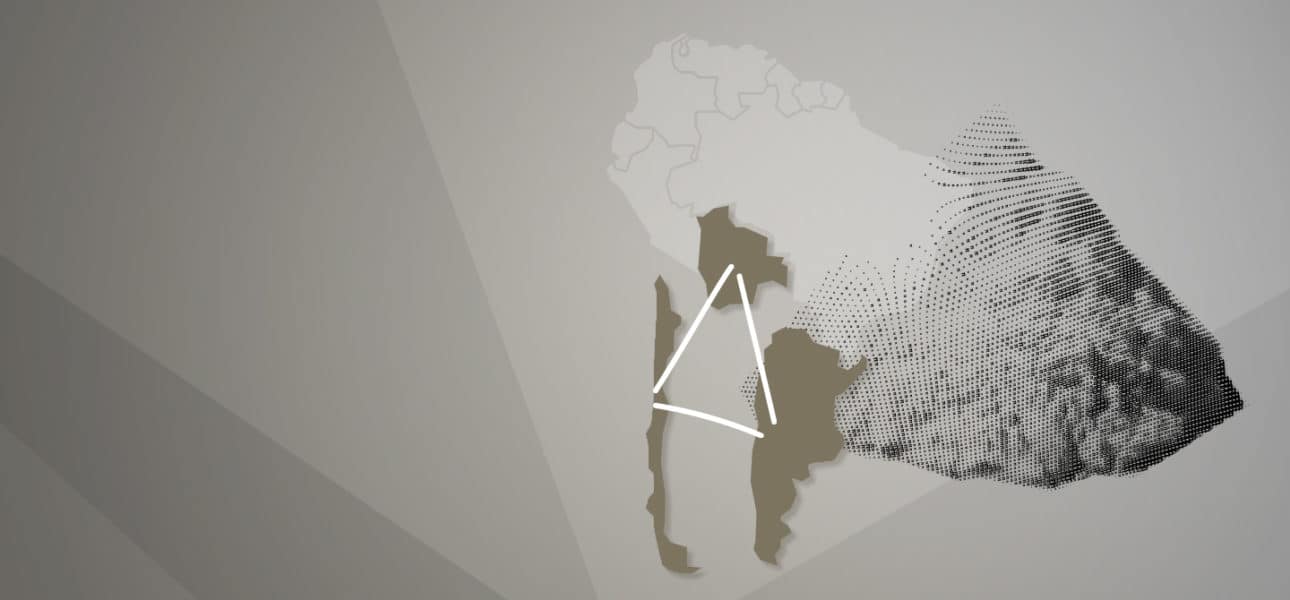In certain countries the abundance of oil can represent a “resource curse” when the whole economy relies on the revenue coming from its extraction, refining and exports. As such, the industry can attract the country’s entire investment capital and qualified labor force, stifling other sectors and hindering the development of the economic system. Whilst this was once the case in Latin-America and the Caribbean, a shift is now set to occur. Historically renowned for its abundance in fossil fuels – mostly from Venezuela – the region now holds the key to two new resources: lithium and green hydrogen.
Growing global demand for lithium
Bolivia’s Salar of Uyuni holds the single largest deposit of identified lithium resources in the world. Moreover, together with Argentina and Chile, Bolivia is part of the so-called “Lithium Triangle” that holds about 60% of global lithium resources (see the following Figure for the documented reserves and production for a selection of countries). Additionally, Peru has recently discovered lithium hard rock deposits.
Production of lithium (together with cobalt, graphite and other minerals) is estimated to increase exponentially in the coming years. Demand will grow from 323,000 metric tons of lithium carbonate equivalent (LCE) in 2019 to 1793,000 in 2030, with needs of the Chinese market being the main driver. This growth is due to the growing demand for clean energy technologies imposed by the energy transition such as wind turbines and solar panels. These technologies depend on lithium-ion batteries to modulate the supply of electricity when there is no sun or wind and the use of electric-powered vehicles is set to increase, too. Hence, the demand for lithium will continue to grow as a result.
The value chain for battery production is increasingly vertically integrated and the contribution of lithium in the total value of a battery can be estimated between 4% and 7%. To fully exploit the potential of their huge lithium reserves, Latin-American countries will need to implement regulation and pursue strategic alliances and investments – especially in research and development and qualification of the workforce.
As such, it is expected that lithium will become a resource that through its sustainable exploitation and transformation into batteries will spill over the rest of the economy. But to make the most of this competitive advantage, it will require a deliberate effort to work because lithium is a non-renewable resource with limited value compared to the rest of the value chain. As such, LAC countries must invest in becoming relevant in the other steps of the value chain if they are to profit from this. If done correctly this added value could spill over to the rest of the economy avoiding the ‘resource curse’.
For instance, Chile was the market leader until 2017, before it was outgunned by Australia. This was in part due to the lack of clarity in taxes, regulation and royalties imposed by the government as well as its slow pace for new players to enter the Chilean market. Had they regulated their lithium market more effectively they could have better retained their market.
Momentum for green hydrogen
A second resource gaining momentum in LAC is hydrogen. Renewable sources represent 55% of Latin America’s electricity generation, almost double than the global average (35%), with some countries like Uruguay reaching 95%. The source of this energy is already competitive with fossil-fuel sources (see the following figure that shows that photovoltaic generation is already cheaper than gas combined cycle generation CCGT), but such technologies are variable and must be complemented with non-variable energy sources to ensure security of the supply. This variability comes from the fact that they only produce energy when the wind blows or the sun shines, and therefore the need for efficient storage technologies remains, creating an opportunity for hydrogen technologies (increasing demand) on the side of batteries.
In the LAC region, hydrogen prices are highly competitive representing a competitive advantage in the production of green hydrogen (increasing supply) because renewable energy represents around 60% of green hydrogen’s total cost. For example, Chile’s green hydrogen is estimated to become competitive with conventional fossil-based generation already in the mid-term (and without considering CO2 costs). This is better than what it is expected for the whole world.
Moreover, the global perspectives for hydrogen are very promising. If there are supportive policies in place, hydrogen could meet 7% of the energy mix by 2050 (187 million metric tons of hydrogen) – in a scenario where global warming is limited to 1.5°. But if strong and comprehensive policy is in force, 696 MMT of hydrogen could be used, enough to meet 24% of final energy demand.
Hydrogen economies are similar to natural gas in the sense that transportation costs (particularly difficult for long distance) are very high (as well as the lack of a captive demand). These characteristics impose a market based on long-term contracts and, similarly to the development of the lithium sector, it requires important improvements in regulation for business to take place in an environment that minimises economic risks both for buyers and sellers and that profits the rest of the economy.
To sum up, both green hydrogen and lithium are to become increasingly important in the energy transition to a net-zero emission world by mid-century. Projections are very promising but, as it has happened with projections regarding renewable deployment in the past they are most likely underestimating the potential of hydrogen and batteries production. To profit from the multiple competitive advantages that the Latin-American Region has in terms of these new resources, and to make those opportunities spill-over the whole economy, the facilitating conditions for investments and value chain transformation must be put in place today.








